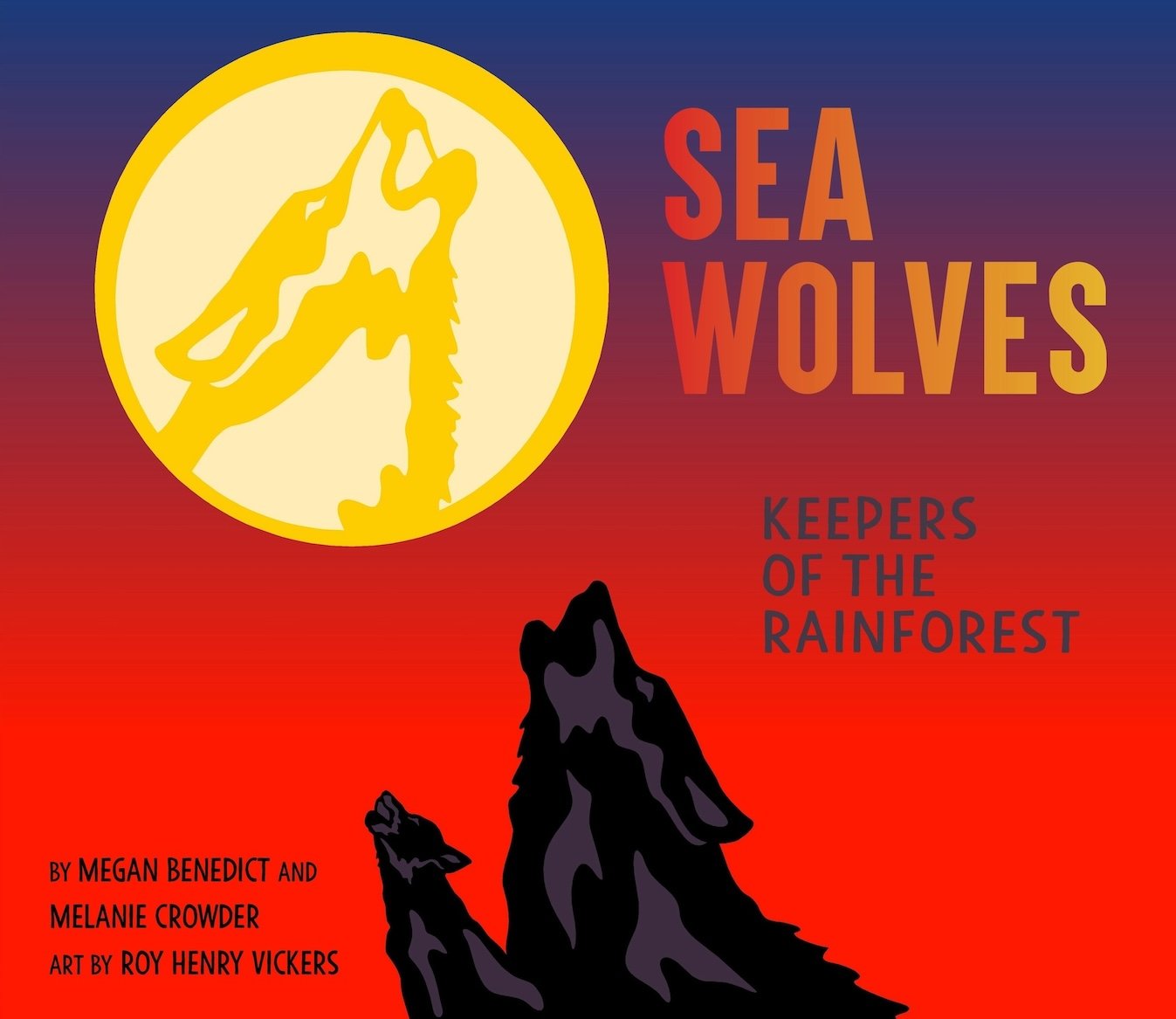Guest Post: Megan Benedict on Sea Wolves: Keepers of the Rainforest
Soon after Sea Wolves: Keepers of the Rainforest by Megan Benedict and Melanie Crowder was published this past summer, I read it to my 3-year-old granddaughter. She listened to it all the way through, echoed a couple of lines, and then went through its pages and found all the wolves hiding in plain sight on every spread. She proceeded to spend some time that afternoon pretending to be a wolf, scratching on the sand (rug) and howling. To my mind, that's the ultimate validation of a picture book, when the youngest reader/listener can find something to take away and hold close.
So I invited Megan Benedict (author and typewriter poet) to tell me how she and her co-author Melanie Crowder took this complicated narrative of animals on the brink in a narrow environmental niche (this very island where I live now, Vancouver Island) and made this story accessible to a remarkably wide age range of young readers.
Photo ©Clayton Jenkins
Here’s what Megan wrote:
“It started with a few lines and stanzas each–images and impressions, really–that we randomly interspersed. ”
Shortly after we finished writing our first picture book, Great Gusts, Mel came to me with the idea to write a picture book about coastal wolves. We’d had so much fun working on Gusts, that I was instantly on board. Having never heard of these wolves before, I started by watching the National Geographic series Wild Life with Bertie Gregory and the Netflix special Island of the Sea Wolves.* I was captivated. In my teens and twenties, I’d spent time in the rainforests of southern Alaska, visited Victoria on the southern tip of Vancouver Island, and taken numerous trips to the Pacific Northwest. I love the chilly, misty green of the forests and the gray on gray on gray of the rocks and sky and sea. It felt like the perfect book for young readers–picturesque and fascinating.
I also come from multiple generations of farmers. My father raises grass-fed cattle on his small farm in northern Colorado, so I grew up with the narrative of wolves as a threat to livelihood. It was important to me from the start to challenge the negative stereotypes of wolves without alienating the people that I love. Which meant that I wanted to paint a fuller picture of these particular wolves and how they are necessary to their environment.
In June, the first summer of the pandemic, we began writing on the lawn of a library. It started with a few lines and stanzas each–images and impressions, really–that we randomly interspersed. Over the next month and a half, we honed every word and line to tighten the poetry and fill out the narrative. I think from the beginning, we knew that we wanted to end with the pups, both as a hopeful vision of future generations of wolves and because they are the counterpart of our child readers–playful and innocent and so very important.
Early on Mel had a vision for the poetry to resemble the ocean waves lapping and crashing against the coastline, and I had the inclination to build sounds into the text to make the poetry more engaging for the child reader. Together, I think those two choices really help to subtly immerse readers, both young and old, in the sense of place. Plus, wolves are really intriguing. All of the young people I know (and many of the folks my age) have, at one time or another, howled like a wolf. Not to mention the fact that we’re social creatures, like wolves, needing each other for survival. Funnily enough, there’s also the wolf/moon shirts from the 80’s that are having a bit of a cult revival. All that to say, I think wolves are endlessly fascinating to people and sort of universally appealing.
And here’s the brilliance of this book—if my granddaughter returns to it in a year or two, or five, she will find more to understand, to appreciate, to care about. Possibly, she’ll retain as well some remnants of an early visual memory of tracking those mysterious lupine faces and forms across the landscapes of page-spreads.
*Island of the Sea Wolves is a Canadian documentary about the amazing sea wolves of Vancouver Island

